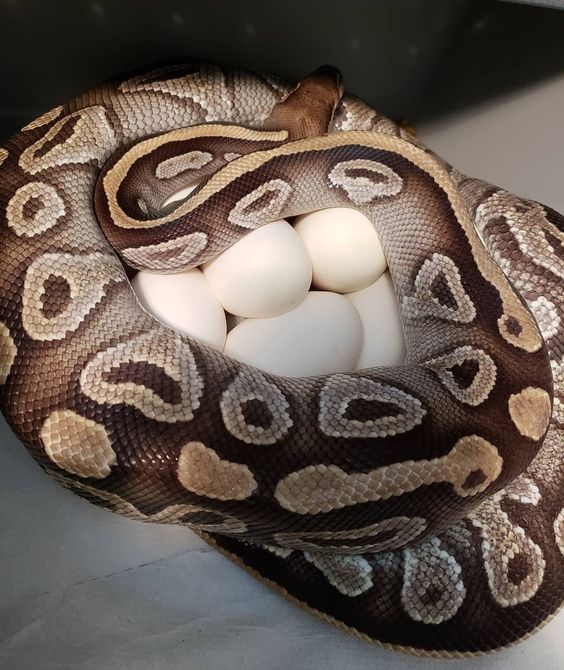Are you thinking of breeding your ball pythons? Don’t feel nervous; it’s not as difficult as you would assume. It’s as simple as applying these strategies and having a little tolerance to breed a ball python. Here is a detailed step-by-step instruction that will coach you through the entire procedure.
For nearly as long as most people have kept snakes as pets, ball pythons have been one of the most famous ones among reptile enthusiasts.
This isn’t unexpected, given that their gentle attitude, moderate size, and pleasing color patterns were just as alluring to snake lovers in the earlier times as they are to their current equivalents.
It is not advisable to keep a wild ball python as a pet, as wild snakes have difficulty learning to live as pets. Furthermore, wild snakes are more prone to infection with parasites and pathogenic microorganisms.
A snake that has been hatched and grown in captivity is more suited to a lifestyle as a pet, and is often free of parasites and hazardous germs. Taking a snake out of the wild is also harmful to the natural population.
Most snake lovers will now find it easier to get captive-bred species, and they won’t have to deal with the annoyance that wild-caught ones may bring due to their fussy feeding habits.
You can breed your ball pythons!
Many keepers, particularly novice ones, feel that breeding ball pythons are a gratifying activity that enables them to appreciate their pets in new ways.
We’ll walk you through the basics of the procedure so you can start your breeding initiative and introduce a few new baby ball pythons to the earth.
Basic Concept of Ball Python breeding:
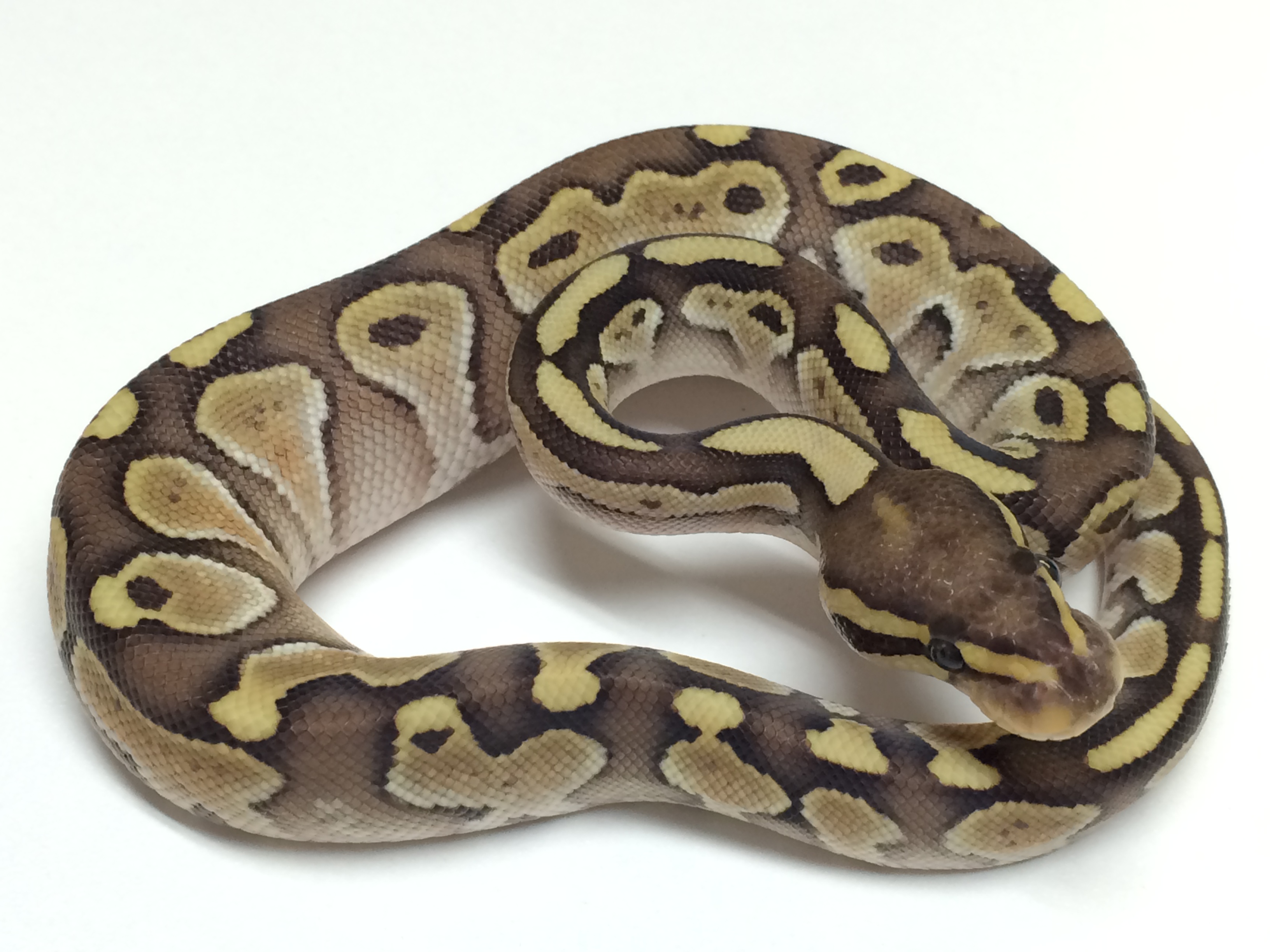
Nonetheless, the majority of effective ball python breeders use some variation of the following:
- To start, you’ll need at least one mixed-sex pair of ball pythons. It is normally recommended to start with hatchlings or youngsters and bring them to adulthood, although adults can be used if necessary.
- Over the next 2 to 5 years, you’ll do everything you can to keep the snakes healthy and stress-free as they grow to adulthood.
- Typically, a cycling routine will be implemented by varying the exposure time and temperature in their environment. This is intended to mimic the seasonal variations seen by wild ball pythons in Africa. Some breeders, however, apply no cycle schedule at all and yet claim success.
- You’ll start exposing the pythons to each other during this “winter” phase. Hopefully, they’ll start breeding soon after that. After you’ve matched the creatures a few times, you’ll stop.
- After a few months, you can return to the normal temperature and light settings. Because the female will normally ovulate around this time, you should supply her with an egg depositing container. After around 6 weeks, you should notice that the female has approached the container, placed eggs, and curled her body around them.
- At this stage, you have the option of allowing the female to incubate the eggs on her own or removing the eggs yourself and transferring them to an incubator.
- If you followed all of the steps perfectly, you should see hatchlings emerge in around 50 to 60 days.
Sexing Ball Pythons
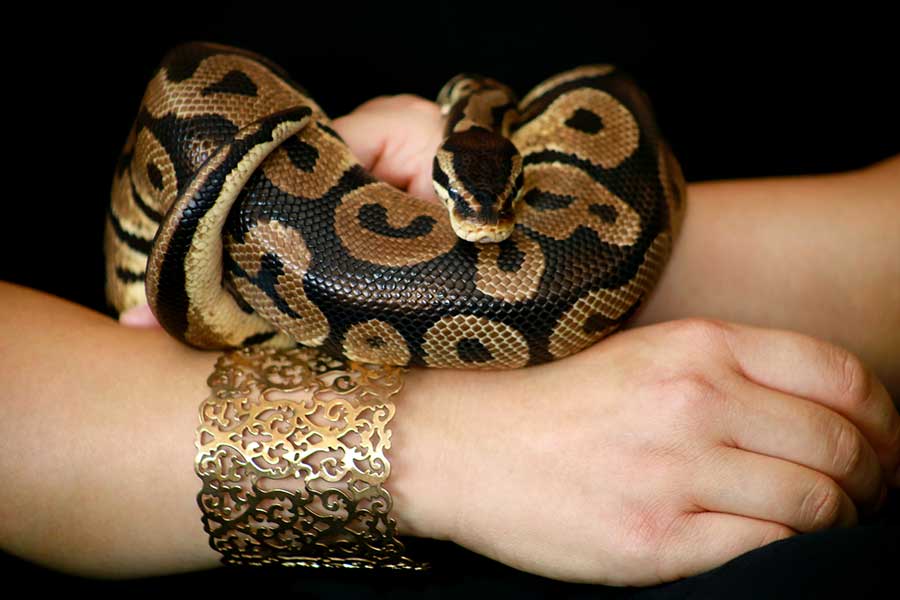
As previously stated, the first step in breeding ball pythons is to get a mixed-sex pair — one female and one male.
Most persons selling ball pythons will likely disclose the sex of the snakes being offered, but it is essential to confirm their gender yourself. Mistakes are normal, and almost every expert breeder has a tale about a snake incorrectly sexed by the vendor.
Sexing ball pythons, on the other hand, is a sensitive technique that is best learned under the supervision of an expert keeper or vet.
In addition, you may always refer to your veterinarian and let him or her identify the sex of your snakes.
Getting Your Ball Pythons Ready for Breeding
Planning your ball pythons for breeding attempts includes verifying that your animals are big enough to mate and in good condition.
Females attain sexual maturity between the ages of 27 and 31 months. Males mature faster, taking 16 to 18 months. Both sexes can effectively reproduce for the majority of their lives once sexually mature.
A fit female with no chronic issues and a satisfactory feeding performance is ideal for mating.
Bigger Ball Pythons generally generate better eggs and are less likely to face health consequences from breeding. Before intending to breed your female, a reasonable basic rule is to wait till she weighs at least 1,500 grams. Fat levels are directly connected to egg development in ball pythons. When a tiny or underweight snake is bred, there are frequently fewer eggs, higher egg fatalities, and injury to the mother.
Choosing a man is considerably simpler. He doesn’t have to weigh far more than 700 grams and is usually smaller than a female.
If you are breeding for a certain morph, you must select parents that demonstrate significant qualities.
Breeding for morphs involves understanding genetic dominance (e.g. recessive, dominant or codominant). Some novices combine morphs to produce hatchlings with a “grab bag” of features.
How to Begin Breeding Trials
Cycling regimens are implemented differently by different ball python breeders, and the details of each strategy vary greatly. However, we’ll go over a generic riding routine below:
- The overall enclosure and basking area temperatures are reduced by around 10 degrees in the fall. The air temperature should be in the upper 70s, with the basking area in the low 80s. Some producers restrict the time limit in which the basking place is turned on per day. Certain breeders also restrict the number of hours the enclosure lighting is turned on each day.
- Throughout this period, continue to supply water, but the food is a different scenario: During the “winter,” some producers keep feeding their animals, while others restrict food until normal circumstances are returned. Continuing to feed the animals poses a minor danger that the snake may be unable to digest its food effectively, but avoiding food over winter may cause your snake to lose a little amount of weight. Simply said, you must make the right decision you can on account of your snakes.
- Most breeders try and introduce males and females around one month after the cycling season begins, although others start late or early. Copulations are more likely to occur at this time. Some breeders will keep males and females together for the rest of the cycle time, whilst others reintroduce and separate the snakes on a regular basis.
- Normal temperatures and natural lighting are returned in the spring time. If you stopped feeding the pythons at the start of the cycle phase, you should restart regular feeding.
- If everything goes as planned, the female will conceive. Ovulation is identified by a rapid and significant mid-body swelling that lasts many hours to a day. Copulations no longer have any influence on the final outcome, thus, the snakes should be maintained apart at this time.
Egg Deposition
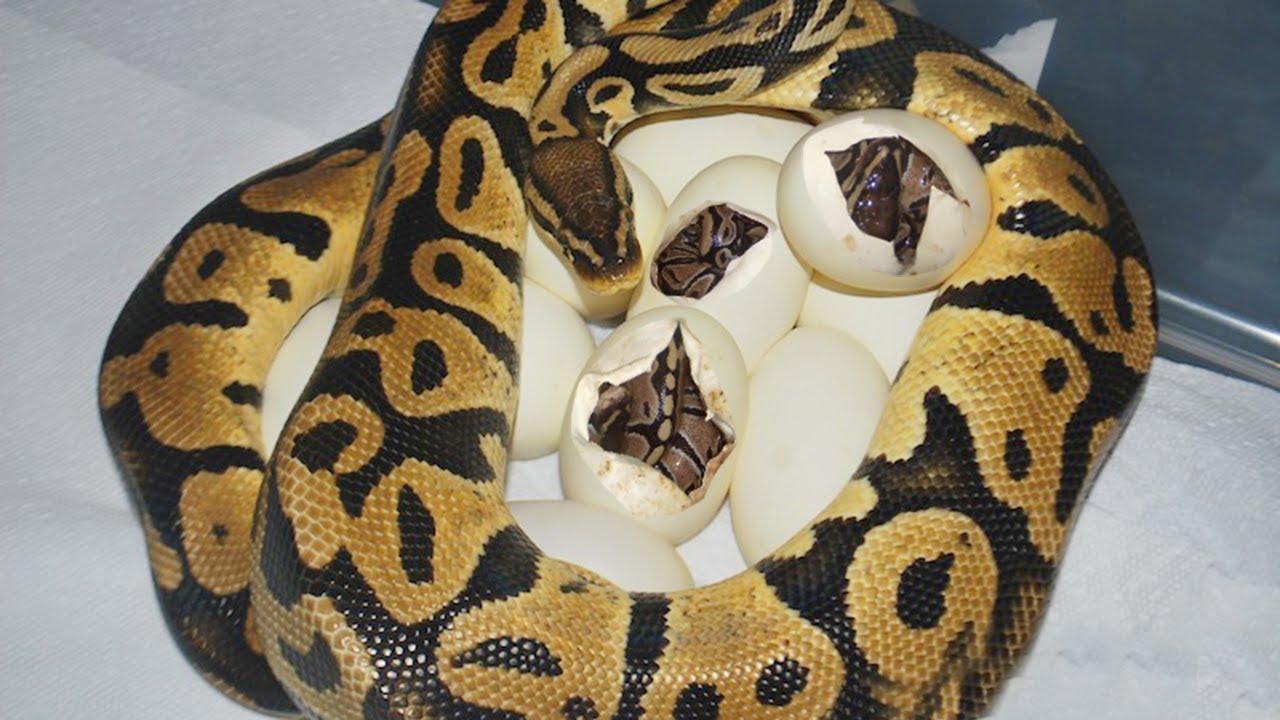
When ovulation is detected, you should supply the female with an egg depositing container.
Different sorts of containers are used by various keepers, but storage containers are mostly considered the most frequent. Just make sure it’s big enough to hold your snake safely.
You can fill the egg depositing box with newspaper, or cypress mulch, although some breeders leave it totally empty.
Throughout this time, try not to bother your female ball python needlessly, particularly once she reaches the egg depositing box.
Therefore, you will need to keep an eye on her to see when she lays the eggs; since ball pythons often wrap their bodies over the egg mass, eggs can sometimes go unseen.
Incubating Ball Python Eggs
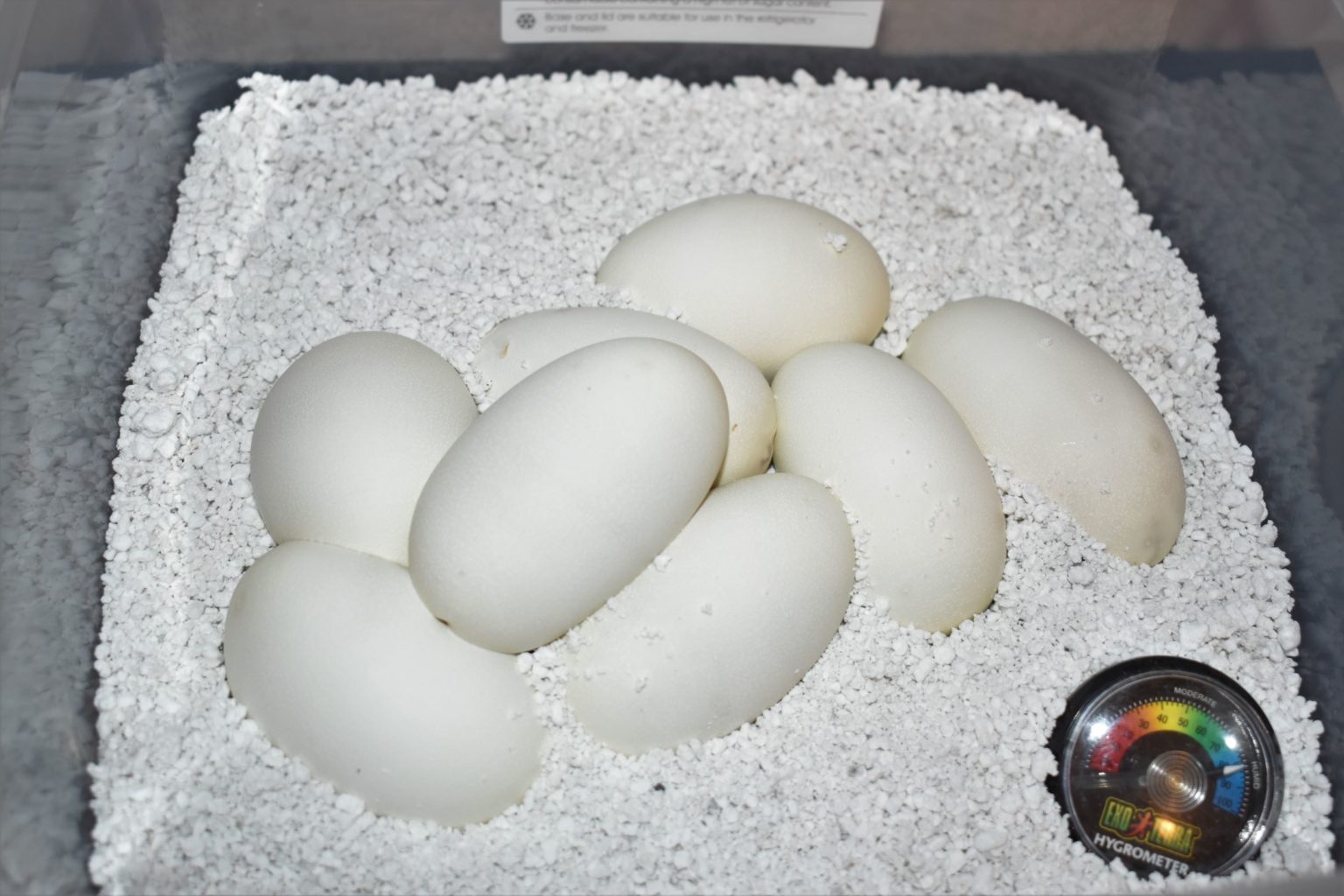
In order to hatch healthy young Ball Pythons, proper incubation is essential.
During incubation, the breeder assumes responsibility for the hatchlings. Their mother did the most of the duty up to this point.
There are several varieties of incubators, some of which may be purchased from a store and others that must be built from scratch.
A 29″ x 16″ x 18″ container is ideal for a do-it-yourself incubator since it has enough capacity to store three mid-size eggs. There should be adequate space surrounding the clutch for air to move freely. Air circulation assists in the uniform heating of the room.
Three weeks before introducing eggs, your incubator must be set up and operating. This will maintain the temperature and moisture levels consistently and within the ideal range.
The temperature within the incubator should be kept constant at 85-85°F. The heat should be dispersed uniformly, with minimal hot spots.
In the incubator, eggs should be placed in smaller containers with a substrate that retains moisture and is devoid of chemicals. Perlite or organic potting material that is well washed are suitable substrates. If you’re using organic soil, add some fine pebbles to keep the substrate ventilated.
The humidity level in the incubator should be between 90 and 100 percent. This may be accomplished by spraying the substrate surrounding the eggs on a regular basis. Avoid getting water directly on the eggs, as this might cause mold.
Incubation
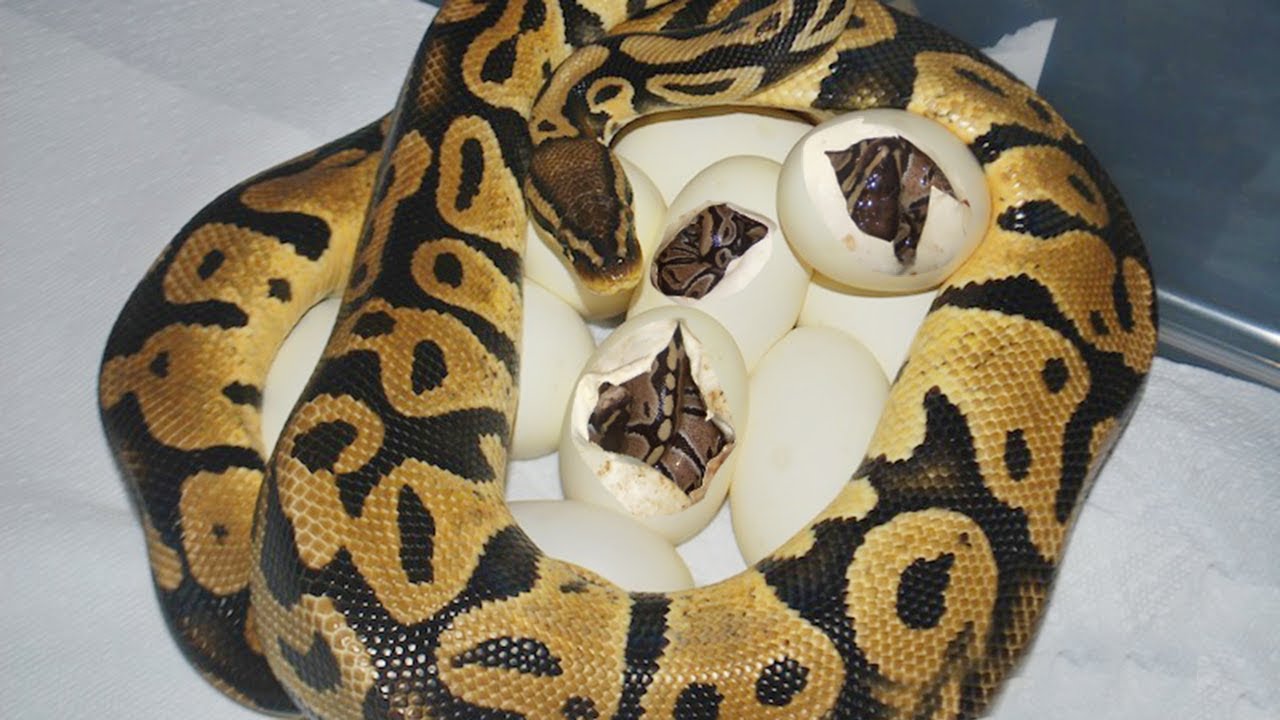
Eggs of the ball python incubate for 54 to 60 days.
As the babies consume extra yolk and approach hatching, the eggs may begin to ripple. Near the completion of the incubation time, the shells weaken as well. On the front of their snouts, baby pythons have an egg tooth. This is used to break the eggshell.
It may take up to 24 hours for the babies to completely come from their eggs after they have pipped. Never attempt to remove a newborn from its egg, because it may still be connected to blood veins in the yolk sac.
You can try to assist if the infants have not pipped within a day of the rest hatchlings. Using a pair of sterile scissors, gently break the eggshell. To avoid nicking your Ball Python, use extra caution while opening the egg.
When all of the infants have completely hatched, they may be separated into different containers.
Food can be given to them after 10 days or their initial shedding.
Hatchling Care
During the first several weeks, keep things simple by using a paper towel as a surface, including a relatively shallow bowl, and providing the snake with some form of a hiding place.
Maintain the habitat temperature in the low- 80s and humidity a touch higher than you would ordinarily for a ball python.
Feeding experiments can begin a day or two after the babies hatch, but most keepers wait until the python shed for the first time.
After each snake has taken its first feeding, you may start caring for it like any other juvenile ball python.
Housing Baby Ball Pythons
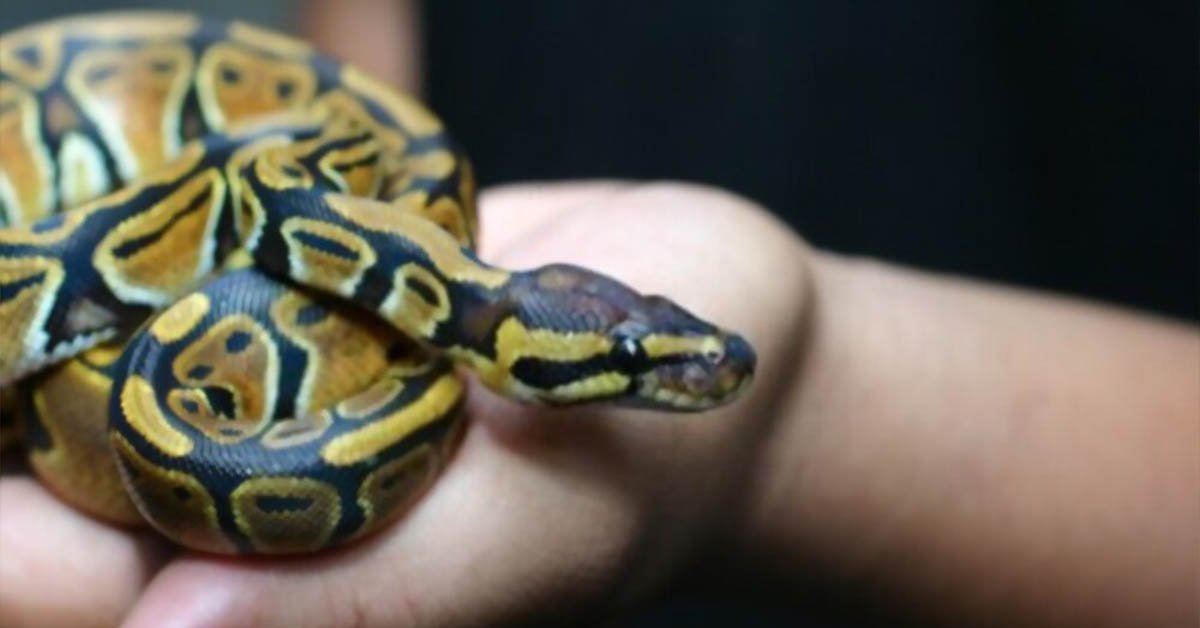
It’s time to get the young ball pythons to their new housing once they’ve been hatched. If you intend to retain all of the snakes, prepare enclosures for each of them to develop and thrive in. During the incubation stage, you can build up these habitats.
These ball pythons will be able to reproduce your following generation of snakes. These ball python eggs can also be given away or sold to other snake keepers, producers, and animal lovers. In captivity, a ball python can live for 20 years more than that. These snakes are buddies for life.
Furthermore, if you want to understand more about ball python habitat, you may click here.
Conclusion
Snake breeding is a pleasant and fascinating pastime.
Ball pythons are excellent snakes for breeders. These tough snakes require little training.
With a little time, patience, and knowledge of genetics, you can start hatching your own Ball Python variants.
The breeding of pythons should always be focused on the snakes. Note that you are responsible for all eggs produced and their maintenance or adoption.
You’re more likely to succeed if you understand everything you can about your snakes and make improvements to correct prior failures.
FAQ’s
Despite being a species with two genders, Ball Pythons may produce eggs without a male. This is referred to as facultative parthenogenesis. In summary, the female produces gametes (ova) that develop into young without the genetic assistance of a male (sperm).
Ball pythons can reproduce more than once a year, although females should only deposit eggs once a year on average. Females will have 26 years of full mating years at best.
The form and length of the tail might help you determine if your snake is male or female. Males will have a thicker and lengthier tail (the region of the snake beginning after the cloacal entrance) than females.
This is known as “pregnancy glow,” and your female’s scaling may become brighter in color, with greater contrast between light and dark patterning. The center is lumpy. Even though this will be most visible at the end of the pregnancy, your female will have little bumps on her body that indicate the existence of eggs.
Live-bearer snakes such as boas and garter snakes are routinely kept and raised in captivity. The incubator must protect the eggs from heat and humidity loss, as well as substantial temperature variations in the surrounding environment. They might be constructed from scratch, such as a plastic container that houses the eggs.

